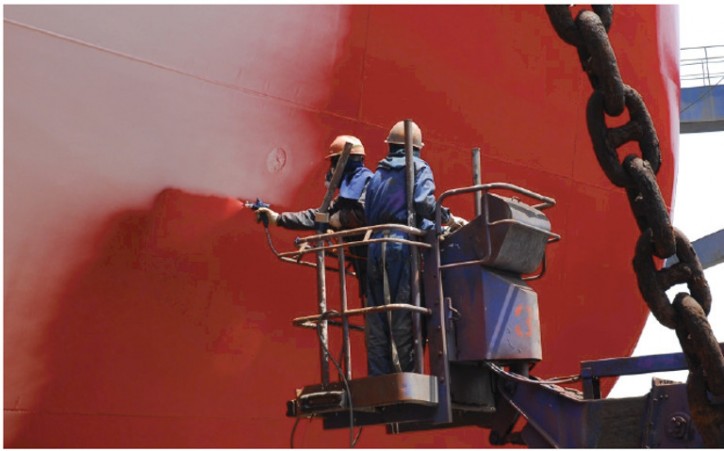What goes on below the waterline stays below the waterline when ships are not maintained properly.
But now a Japanese company has developed a special barnacle-busting paint that dramatically affects a ship’s performance at sea.
When barnacles, green mussels and other organisms adhere to the hull of a vessel, the result is less speed and fuel efficiency because of the added weight and friction.

A subsidiary of leading paint manufacturer Nippon Paint Holdings Co. developed the paint that will go on sale in January.
It says the product repels barnacles, improves fuel economy and reduces carbon dioxide emissions by more than 15 percent relative to standard, existing paint products.
Barnacle larvae secrete substances in accordance with the quality of the surface of adhesion, such as a rock or a ship hull. The new paint product creates a mottle of water-friendly and water-repellent sections on the surface, and thereby “confounds” barnacles, which can no longer tell what substances they have to secrete in order to be able to adhere to the surface.
The developers got their inspiration from the structure of a resin that prevents platelet cells from aggregating in an artificial blood vessel.
Conventional paint products release organism-killing substances, such as cuprous oxide, into the ocean to keep barnacles at bay, but the new paint does not contain such materials.
For this reason, it would remain usable even if chemical substances containing such ingredients were to come under regulation in the future, company officials said.
It is estimated that 46,000 or so vessels ply international routes around the globe resulting in the emissions of 790 million tons of carbon dioxide in 2012, more than the amount spewed out by Germany alone.
Trial calculations by Nippon Paint show that application of the new paint product on all those vessels would allow annual carbon dioxide emissions to be cut by 100 million tons, the equivalent of about 7.1 billion Japanese cedar trees.
Source: Asahi Shimbun